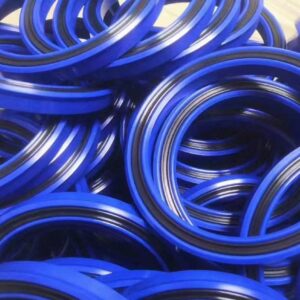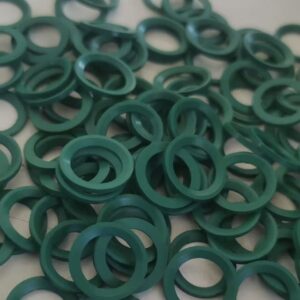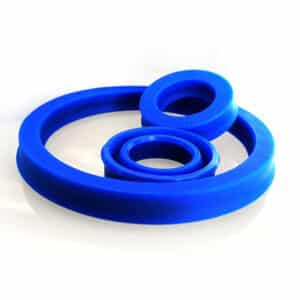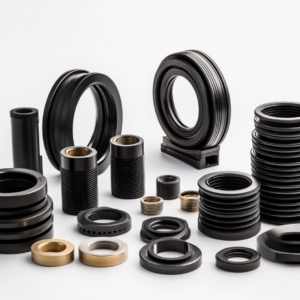Hydraulic Seal Solutions Hub | How to Choose the Right Seals, Materials & Kits
Looking for the right hydraulic seal but overwhelmed by choices?
This all-in-one resource breaks down everything—from basic concepts to advanced material comparisons, seal types, and field kits—so you can choose the perfect seal for your application with confidence.
Πίνακας περιεχομένων
What Are Hydraulic Seals and How Do They Work?
Hydraulic seals are essential components that prevent fluid leakage and maintain system pressure in hydraulic machinery. They’re commonly used in cylinders, pistons, and rods to keep oil in and contaminants out.
A reliable seal ensures longer service life, safety, and lower maintenance costs. Choosing the right seal type—rod, piston, wiper, or buffer—depends on your application’s pressure, temperature, and movement needs.
📌 Learn More About Hydraulic Seals:
A complete guide to selecting and installing the right seal for your hydraulic equipment.
Explore rod seals, piston seals, buffer rings, and guide rings—understand their functions and where to use them.
Not sure if a kit or single piece suits your needs? This guide helps you decide.
Avoid installation errors with accurate measuring tips and tools.
Which Hydraulic Seal Material Performs Best Under Pressure?
Choosing the right material is critical for high-pressure and high-temperature hydraulic sealing. Whether you need resistance to chemicals, extreme heat, or long-term wear, different materials like FKM, TPU, NBR, and PTFE offer unique advantages.
Learn how to select the most reliable seal material based on your cylinder design, media type, and application pressure.
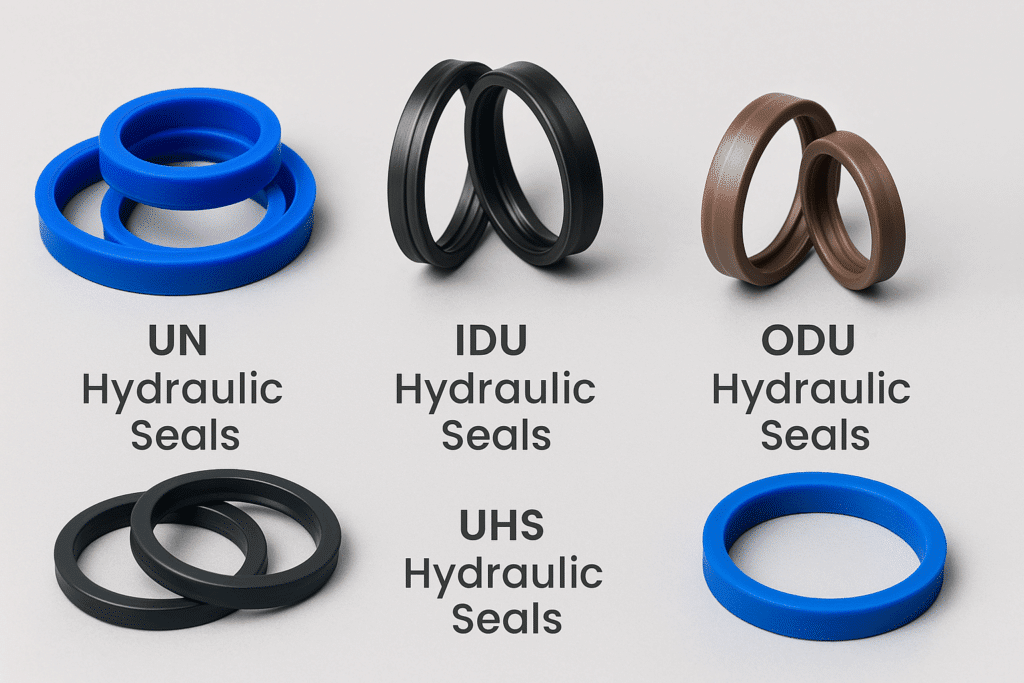
🔍 Recommended Reading:
Explore the best material choices for long-term sealing under extreme pressure.
Understand how materials affect sealing function, compression set, and chemical resistance.
Not sure whether your system needs hydraulic-grade elastomers? This guide compares both types.
Learn how V-type profiles and materials perform in harsh pressure environments.
Compare popular buffer seal materials: PTFE vs PU vs FKM.
Material shape and hardness matter—see how these two seals differ.
Detailed comparison of materials used in internal vs external double-acting seals.
💡Not Sure Which Material Suits Your System Best?
Which Hydraulic Seal Works Best for Your Industry?
Hydraulic systems are everywhere—from construction and agriculture to molding machines. But each industry faces unique sealing challenges: high impact in excavators, chemical stress in injection systems, and constant motion in farming equipment.
Learn how to pick the right seal based on your working environment.
💬 Need Help Matching the Right Seal to Your Industry?
🔍 Industry-Specific Guides:
Not all seals perform the same in industrial setups—learn how to match seal type with your system’s motion and media.
Explore heavy-duty sealing solutions designed to withstand mud, vibration, and high-pressure operations.
Choose seals that resist wear and chemicals in precision plastic molding environments.
Field machinery demands durable sealing—see what works best for tractors, harvesters, and loaders.
🔧 Must-Read Guides:
Explore high-pressure kits designed for hydraulic cylinders in critical systems.
A step-by-step tutorial with tips on seal orientation, installation tools, and mistakes to avoid.
Prevent damage from UV, dust, or deformation with best storage practices.
Spot early warning signs and extend seal life with proactive maintenance.
Choose by size, material, or OEM match—downloadable seal kit lists available.
What’s the Best Hydraulic Seal Kit for Your Maintenance Needs?
If your equipment requires frequent seal replacement or field repair, hydraulic seal kits offer a fast, cost-effective solution. Instead of sourcing individual seals, a well-assembled kit ensures the right combination of piston, rod, and backup seals—ready for immediate use.
Explore how to choose, store, and maintain seal kits for long-term performance.
📦 Want to Get a Sample or Request a Custom Kit?
How to Select or Design a Custom Hydraulic Seal?
Choosing the wrong seal design can lead to leakage, machine wear, or even system failure. That’s why for complex hydraulic applications—especially in OEM equipment—custom sealing solutions often outperform off-the-shelf options.
From stack design to supplier selection, here’s how to get it right.

Learn when and why custom seals are needed, and how to define groove specs, material, and shape.
Understand the logic behind multi-seal arrangements—buffer, rod, piston, and wiper—and how to configure them.
Avoid overcompression, mismatched materials, and wrong dimensions from the start.
Not all manufacturers offer the same quality, delivery, or MOQ flexibility—learn what to ask before you place an order.
🛠️ Need a Seal Engineered for Your Cylinder?
Recommended Hydraulic Seal Products
We provide a full range of hydraulic seal products, including rod seals, piston seals, buffer rings, and wipers—available in NBR, FKM, PTFE, PU, and more.
Browse our Hydraulic Seal Collection to find the right solution for your cylinder systems, no matter the pressure, fluid type, or speed requirements.

